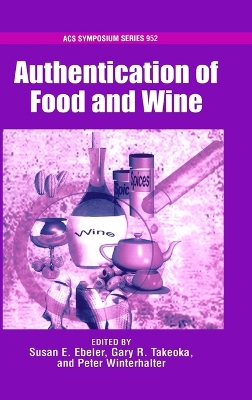ACS Symposium
2 primary works
Book 952
Authentication of Food and Wine
by Susan E. Ebeler, Gary R. Takeoka, and Peter Winterhalter
Published 25 January 2007
Consumers, regulators, and the food industry increasingly require that foods comply not only with label descriptions of food content, but also with information regarding the food's origin. For example, the wine industry has a long history of labeling wines based on varietal, regional, or age (vintage)-related properties. However, regulatory agencies are now beginning to require methods to confirm this label information. Food retailers are also facing voluntary or
mandatory labeling requirements that will indicate regional or country-of-origin, species and/or varietal information. As a result, development of reliable analytical methods to confirm the authenticity of the label information is needed. This book presents the latest research on food and wine
authentication. The chapters are authored by leading international scientists whose research focuses on the development and application of analytical methodologies used for the authentication of food and beverages.
mandatory labeling requirements that will indicate regional or country-of-origin, species and/or varietal information. As a result, development of reliable analytical methods to confirm the authenticity of the label information is needed. This book presents the latest research on food and wine
authentication. The chapters are authored by leading international scientists whose research focuses on the development and application of analytical methodologies used for the authentication of food and beverages.
Book 988
This book presents summaries of papers that were presented at the 2005 International Chemical Congress of Pacific Basin Societies (Pacifichem) Meeting in Honolulu, HI, December 15-20, 2005. The chapters are authored by leading international scientists in the area of flavor chemistry and analysis. The book is divided into five sections. The first section focuses on analytical methods for flavor analysis, including developments in multidimensional separations, new
chromatography stationary phases, diverse sensors for rapidly detecting multiple compounds, and methods to quantitatively measure interactions between flavors and matrix components. In the second section, the focus is on identification and characterization of flavors in a diverse array of foods and
beverages, including grapes, celery, tea, and mesquite pods. Mechanisms of flavor formation including thermal generation of aromas as well as characterization of genes and enzymes involved in flavor formation are emphasized in the third section. In the fourth section the focus is on relating chemical composition to sensory perception, particularly in complex mixtures. Finally, chapters in the last section focus on the biological activity of essential oils and flavors.
chromatography stationary phases, diverse sensors for rapidly detecting multiple compounds, and methods to quantitatively measure interactions between flavors and matrix components. In the second section, the focus is on identification and characterization of flavors in a diverse array of foods and
beverages, including grapes, celery, tea, and mesquite pods. Mechanisms of flavor formation including thermal generation of aromas as well as characterization of genes and enzymes involved in flavor formation are emphasized in the third section. In the fourth section the focus is on relating chemical composition to sensory perception, particularly in complex mixtures. Finally, chapters in the last section focus on the biological activity of essential oils and flavors.

